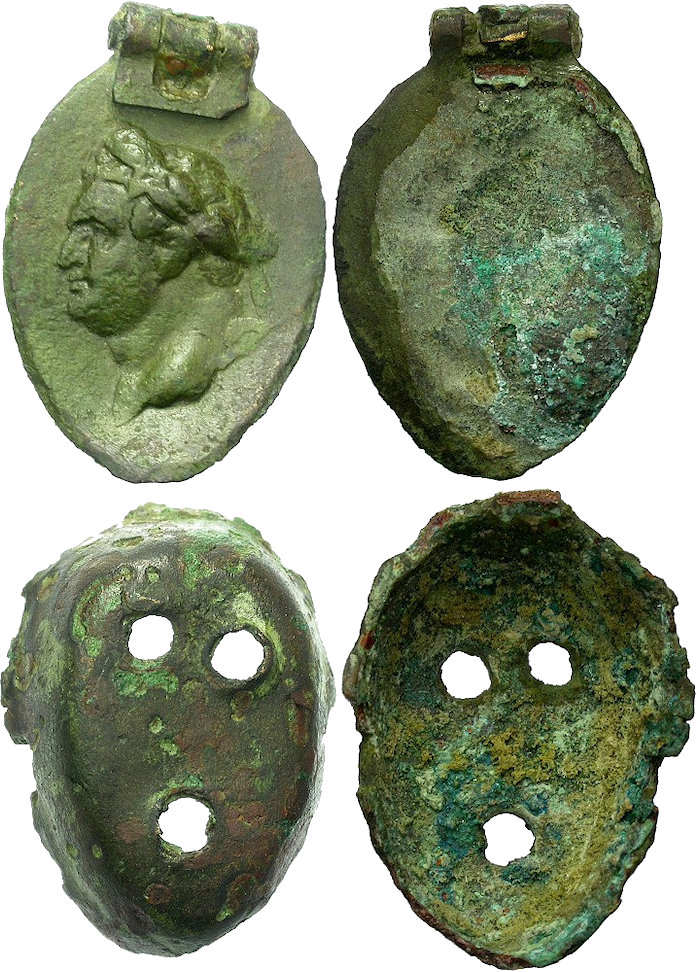Fine Coins Showcase
Antiquities Showcase
Show Empty Categories
Shop Search
Shopping Cart
My FORVM
Contact Us
About Forum
Shopping at Forum
Our Guarantee
Payment Options
Shipping Options & Fees
Privacy & Security
Forum Staff
Selling Your Coins
Identifying Your Coin
FAQs
zoom.asp
Titus, 24 June 79 - 13 September 81 A.D., Imperial Seal Box
 When the Romans sent important small packages by courier, such as documents or valuables, they were were placed in strong leather or cloth bags, which were sealed with a stout cord, the knot covered in wax and impressed with the sender's signet. To protect the wax seal, it and the knot were encased in a small, ornamental metal box with an hinged lid and two holes in the back for the cord. In addition, the lid could be kept closed by further cords sewn to the package and tied around it. Hinged boxes used for this purpose have been found in Britain, where they tend to date to the 2nd and 3rd centuries and are mostly of enameled bronze. However, they certainly started earlier. Hattatt illustrated an example found in Ostia bearing the portraits of Hadrian and Sabina (p. 464, 151) and seal boxes with portraits of Vespasian and Domitian have been found in London and must have been used by high officials (P. Salway, A History of Roman Britain [Oxford 2001], p. 381). This was certainly the case with this piece, especially given its splendid portrait of Titus, which was surely made by workers in the imperial mint in Rome and then sent out for official use in the provinces. See Roman| Seal| Boxes| by Colin| Andrews| - https://www.ukdfd.co.uk/pages/roman-seal-boxes.html for more information, as well as other examples of the type.
When the Romans sent important small packages by courier, such as documents or valuables, they were were placed in strong leather or cloth bags, which were sealed with a stout cord, the knot covered in wax and impressed with the sender's signet. To protect the wax seal, it and the knot were encased in a small, ornamental metal box with an hinged lid and two holes in the back for the cord. In addition, the lid could be kept closed by further cords sewn to the package and tied around it. Hinged boxes used for this purpose have been found in Britain, where they tend to date to the 2nd and 3rd centuries and are mostly of enameled bronze. However, they certainly started earlier. Hattatt illustrated an example found in Ostia bearing the portraits of Hadrian and Sabina (p. 464, 151) and seal boxes with portraits of Vespasian and Domitian have been found in London and must have been used by high officials (P. Salway, A History of Roman Britain [Oxford 2001], p. 381). This was certainly the case with this piece, especially given its splendid portrait of Titus, which was surely made by workers in the imperial mint in Rome and then sent out for official use in the provinces. See Roman| Seal| Boxes| by Colin| Andrews| - https://www.ukdfd.co.uk/pages/roman-seal-boxes.html for more information, as well as other examples of the type.



OBVERSE LEGENDS
REFERENCES
Page created in 0.672 seconds.






